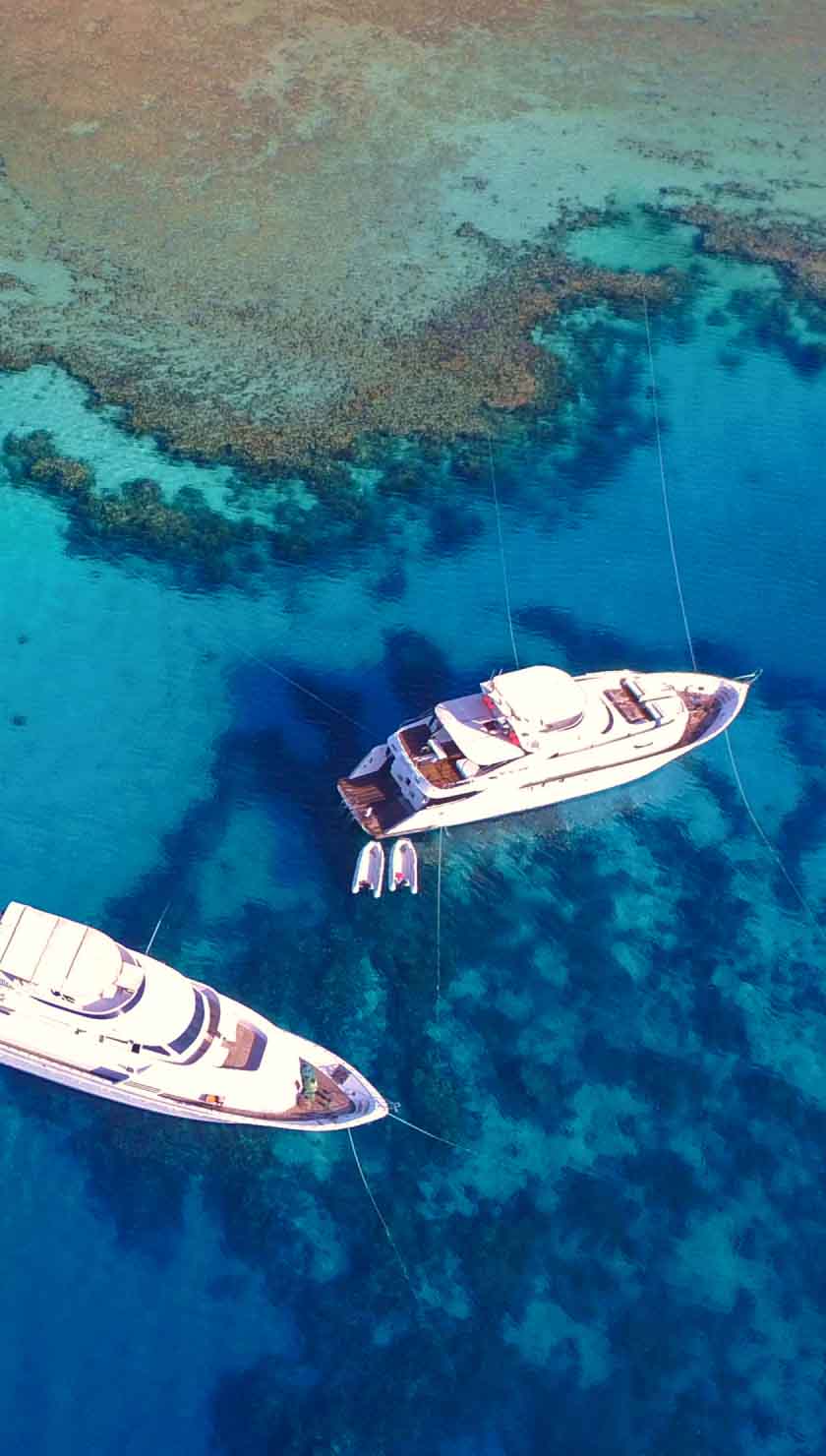Liveaboard Diving in Grand Bahama
WHAT TO EXPECT ON A GRAND BAHAMA LIVEABOARD
Liveaboards in Grand Bahama will offer amazing Caribbean dive sites throughout the Bahamas. Grand Bahama is just one of the 700 Bahamian islands and one of the 26 inhabited ones. It has 51,756 people living on it, with the area being 1373sq/km (530sq/miles). It is the northernmost island of the Bahamas and the closest to the United States, 86km (53 miles) from the coast of Florida. Liveaboard itineraries from here usually visit dive spots like Tiger Beach and other local dive site favorites.
The Spanish named it Gran Bajamar, meaning the Great Shallows, because it is surrounded by beautiful shallow reefs in clear waters. It was quite an underdeveloped island until 1834 when it started flourishing. It is now known for the many resorts and luxury it provides tourists worldwide.
Grand Bahama Underwater
This area provides liveaboard divers with diverse underwater gems, ranging from wrecks to caves, ledges, coral with peculiar and unique shapes, shark feeding stations, and the chance to swim with dolphins.
Dive Sites Of Grand Bahama
Sharks are in high abundance in the Bahamas, which also aids with the reefs being so healthy and thriving. Grand Bahama has a feeding station for Caribbean reef sharks, where an experienced feeder will lure multiple sharks towards them and you as a diver. There are usually 10-25 sharks with sizes up to 3m (9ft). However, the most famous of all spots is Tiger Beach. Here, your liveaboard dive trip will see multiple Tiger and Nurse sharks during their feed. These massive striped beasts are magnificent to be so close to.
Multiple wrecks are lying around this area, which may be visited all very differently. Jose's Wreck is a smaller 12m (40ft) wreck with multiple lobsters and crabs living in and on it; Theo's wreck is much larger, around 70m (228ft). You are allowed to penetrate this wreck (if you have the certification) and keep an eye out for the green moray eels and the spotted eels. Even an old ferry wreck has become a rich coral jungle, a beautiful dive site.
Edge of the Ledge, a fitting name for this dive site, is compared to diving at the top of the Grand Canyon as you are diving by the slope of a continental shelf. Apart from the thrill of diving along this ledge, it is a great place to spot larger species, such as Eagle Rays, Hammerheads, and Manta Rays. Along with a ledge, Ben's Blue Hole dive site also provides the excitement of diving in a blue hole; the hole is located within a large fracture in the ground. You will spot many crustaceans here.
Grand Bahama liveaboard itineraries offer many dive sites with corals with unique and peculiar shapes. A few examples are Pillar Castle, filled with pillar-formed corals; Arrow Point, where the corals are shaped in rough triangle shapes; and Picasso Gallery, which holds numerous star corals of all shapes and sizes.
Top Tips For Divers
A Bahamas liveaboard to Grand Bahama provides dive opportunities for divers of all levels, with deep sites ranging between 18m - 30m (60ft-100ft), Medium depth dive sites with depths of 12m - 18m (40ft - 60ft) and shallow/easy dive sites with depths of 3m - 4.5m (10ft - 15ft). It allows everyone to enjoy a diving or snorkeling experience.
Getting To Grand Bahama
Grand Bahama has its international airport called the Grand Bahama International Airport, a privately owned airport, and flights arrive here from numerous destinations within the United States. If flying is not for you, or you want to taste those sparkling turquoise waters, you can take a ferry from Fort Lauderdale, Florida, directly to Grand Bahama.











